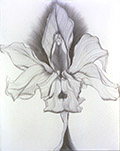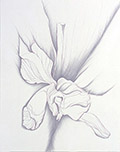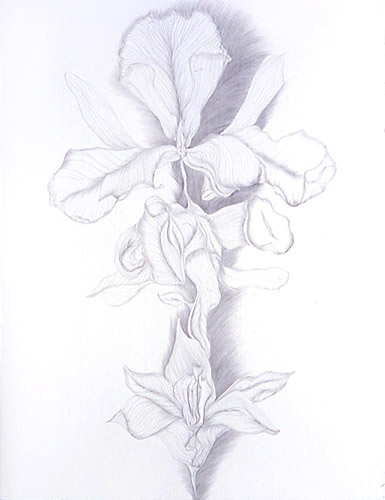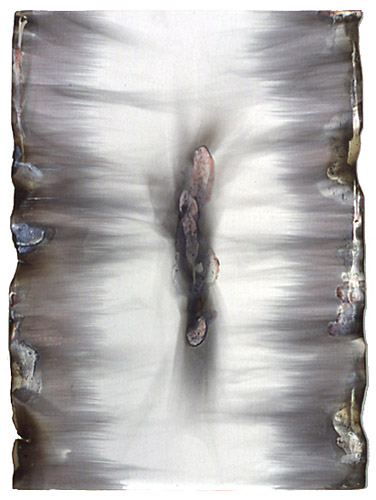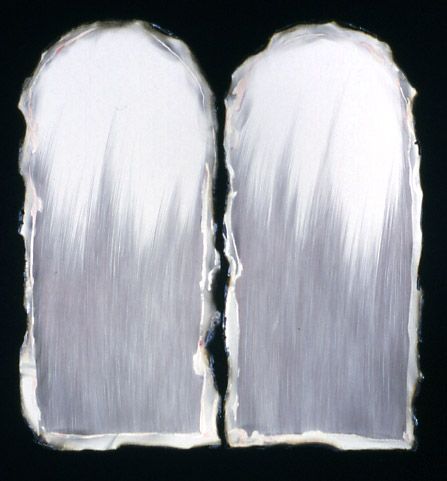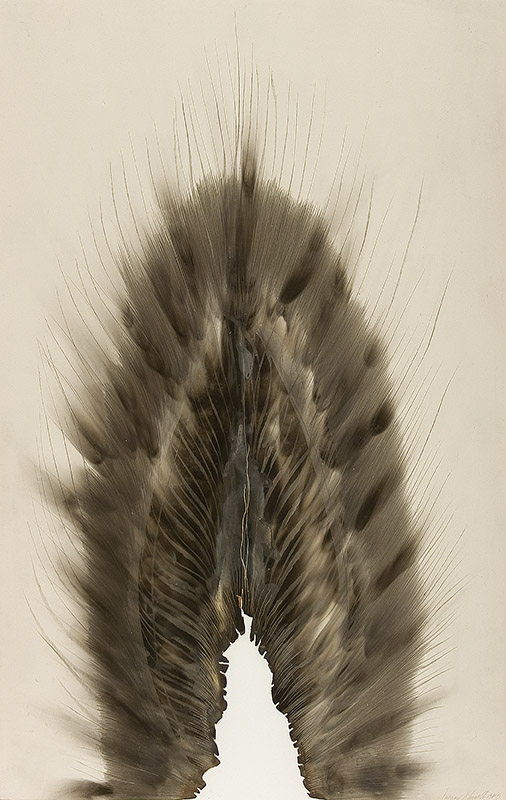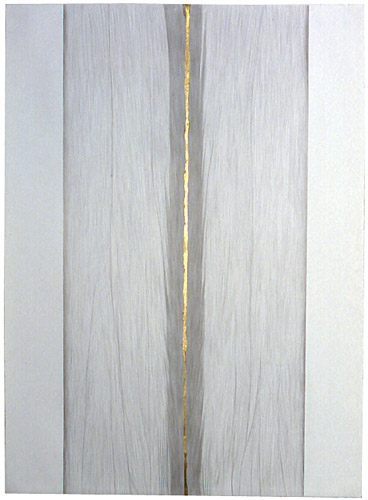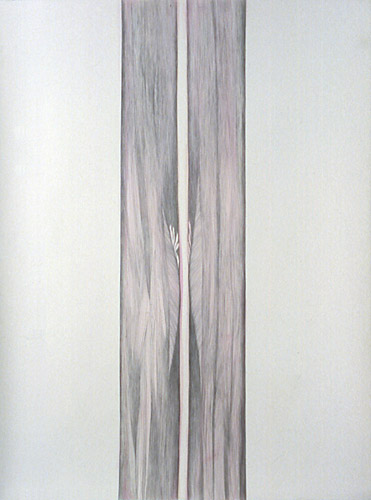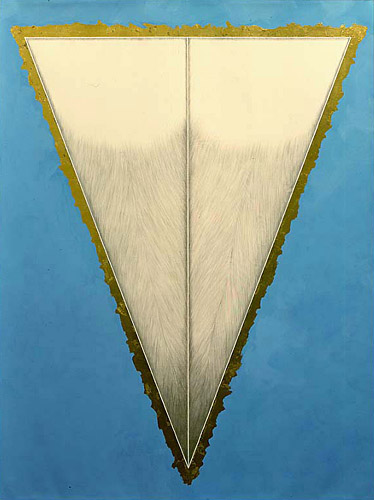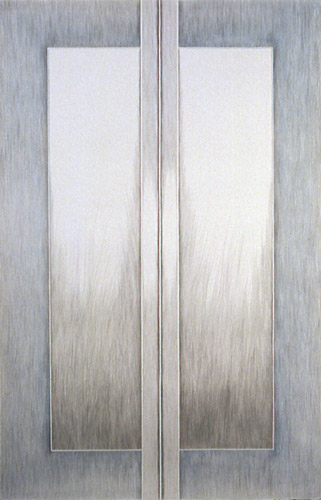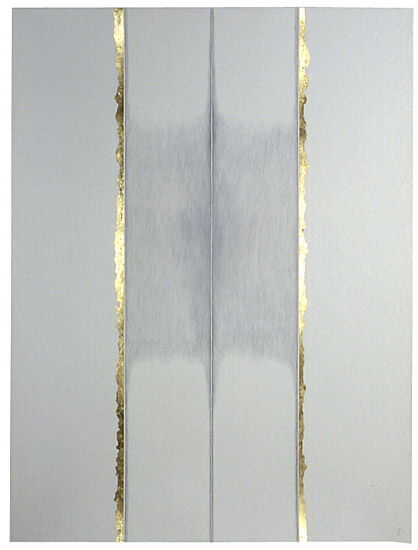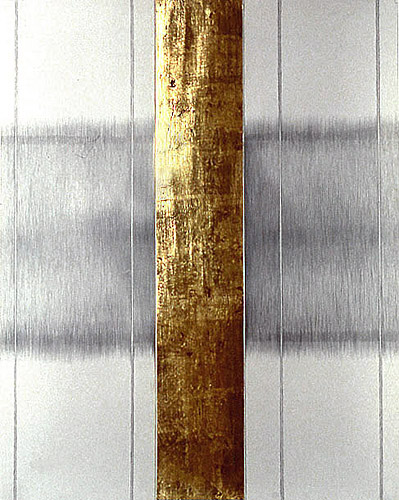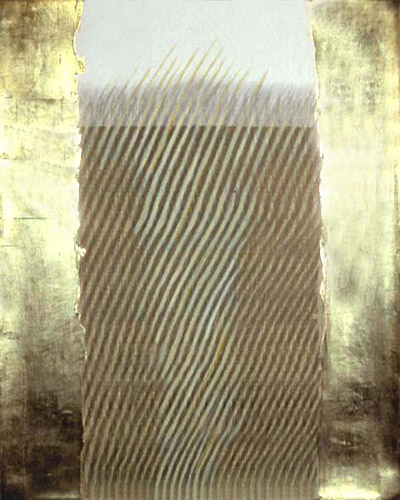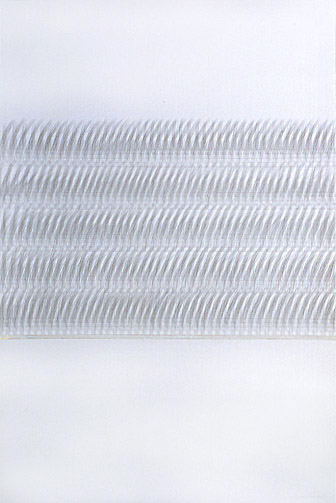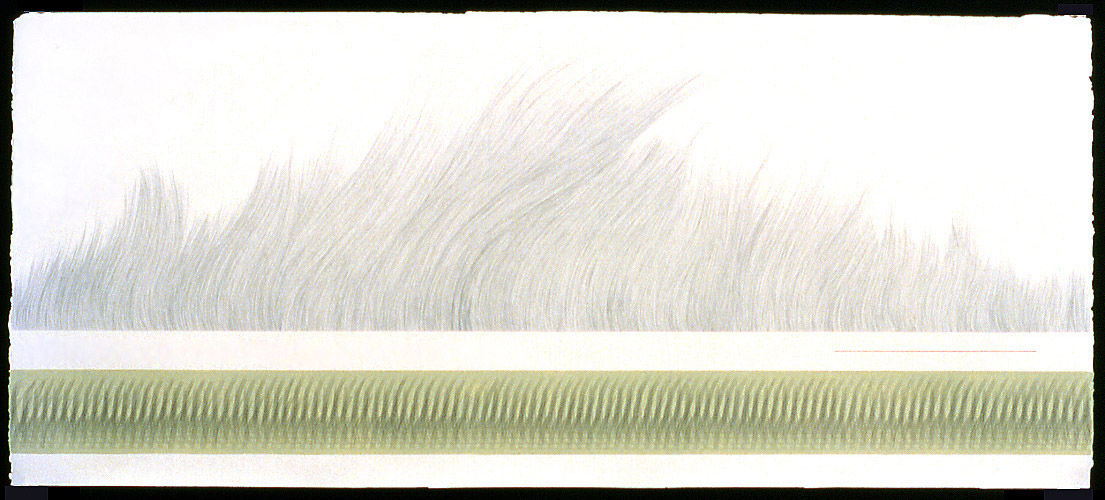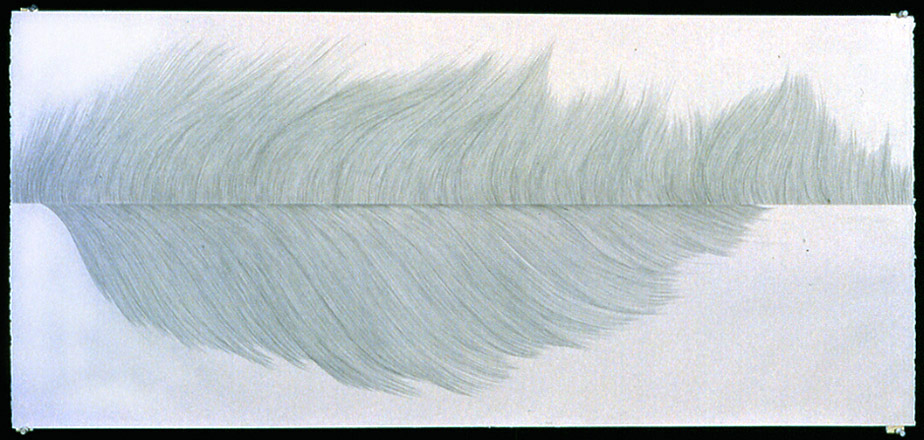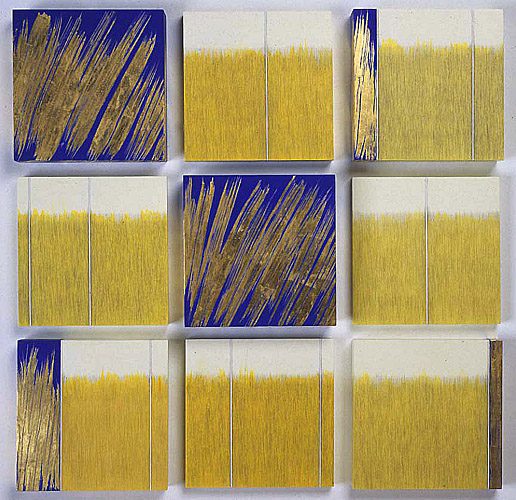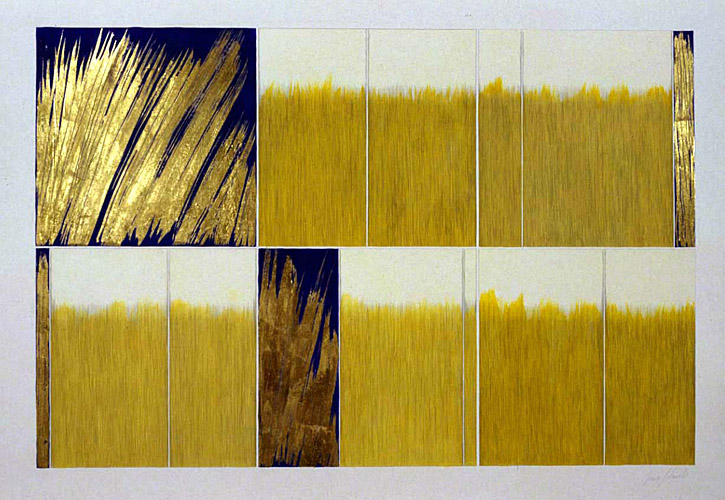

Gradually as my work became more and more abstract, I removed the orchid as a literal subject and worked with the shapes behind the flower. I began to scratch and tear the paper and then added smoke and fire as part of my technique, juxtaposing the very precise silverpoint technique with an emotionally free and dramatic element. In the works entitled “Parchment,” “Covenant” and “Headdress,” personal and public rituals provided a source for my imagery.
“Susan Schwalb’s metalpoint and smoke Tablets and Headdresses explore the effects of fire as a symbol of dynamic transmutation of matter into energy. She probes changes of state, the limits of life and death, destroying part of the art work itself in a moment of the burning, the ephemeral moment in which the essential radiance inherent in all matter is perceived.”
— Gloria Orenstein, "Evocative Images," Arts Magazine, May 1980
In 1980, during a residency at Yaddo, I completed a series of burnt triptychs and then a major 5-part work, “Rites of Passage” which dramatically enlarged the scale of these works.
“At the time of the residency at Yaddo she began mixing silverpoint marks with interactions of smoke and fire. In this work a delicate charring of the paper merges with the metallic marks to achieve a curious variant of trompe l’oeil effect. One series from this period, titled “Parchments,” is a poignant signifier of documents from the ancient past.”
— Jill Waterman, "Delicate understandings," artsMEDIA, June 15 – July 15, 2000
“Schwalb’s treatment of this venerable technique is unconventional. 'Powerful' is not often an appropriate adjective for silverpoint, which lends itself to delicate effects. But Schwalb’s work is powerful indeed. She creates a union of the sensuous and the spiritual, and does so in inventive ways. Her drawings are large, and she often tears part of the drawing or burns into it with a candle. This partial destruction is part of the art — a very forceful part. The candle flame, which Schwalb cannot completely control, adds to the element of risk already inherent in silverpoint, which cannot be effectively erased. The line the artist makes is the line that stays.”
— Christine Temin, "Silverpoint’s delicate power," The Boston Globe, 11/14/1986
| In 1984, I began to use color combined with silverpoint. In these large-scale works, burning no longer plays a role; instead, the drawing becomes very varied, ranging from subtle toning to complex linear imagery. I used line to build up a vibrating, luminous surface that forms a stark contrast to the white of the paper. |
“In one drawing, Ritual, Schwalb returns fleetingly to a representational element, two small feather shapes, on each side of the central line. The pinkish glow that encompasses the opening, formed by her addition of a subtle application of tempers, adds to the sensuality of the piece. Schwalb’s renewal of minimal imagery echoes the work of Barnett Newman somewhat, but her lines are very gently curved, and their quiet swaying movements reflect their human, intimate scale, rejecting grandiosity.”
— Stephen Breslow, "Four Women Artists," Art Papers, March/April 1988
“White Night” and “Spiritus Mundi” continue this theme. The same can be said for my Poplar series (1989–92) which had its source in a painting by Monet. The Judean Desert and Sandstorm works (1988–90), evoking memories of a trip to Israel, introduce a very complicated technique of cross-hatchings. “Quintet” takes it one step further and combines this cross-hatching with a grid based on the lines in a musical score.
“Schwalb is referential also in the large Homage to Monet, part of her Poplar Series. Unlike Monet’s naturalistic scene, these work of silverpoint, acrylic and gold leaf on paper juxtapose geometric verticals with horizontal bands of muted wash over delicate silverpoint strokes. The paintings glow with a vibrancy that belies their stark precision, the infusion of color implying a tension between feeling and formal means.”
— Alicia Faxon, "Viewpoints," Art New England, October/November 1991
“The harsh desert landscape inspired Susan Schwalb’s abstractions, which emphasize the repetitious rhythms of barren terrain. Punctuated by gilded vertical strips symbolizing gaunt poplar trees, the compositions go beyond superficial appearance to analyze the artist’s experience of place.”
— Helen A. Harrison, "Contemporary Metalpoint Drawings," The New York Times, 4/3/1994
![]()
